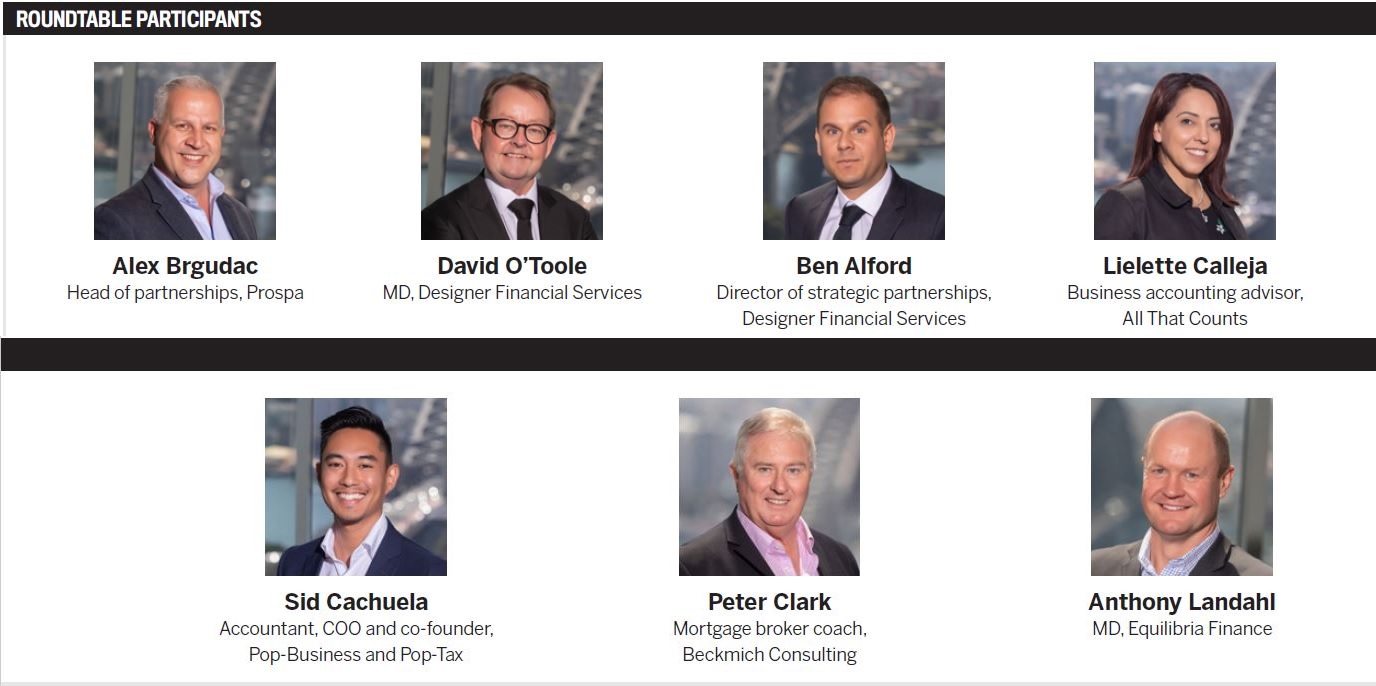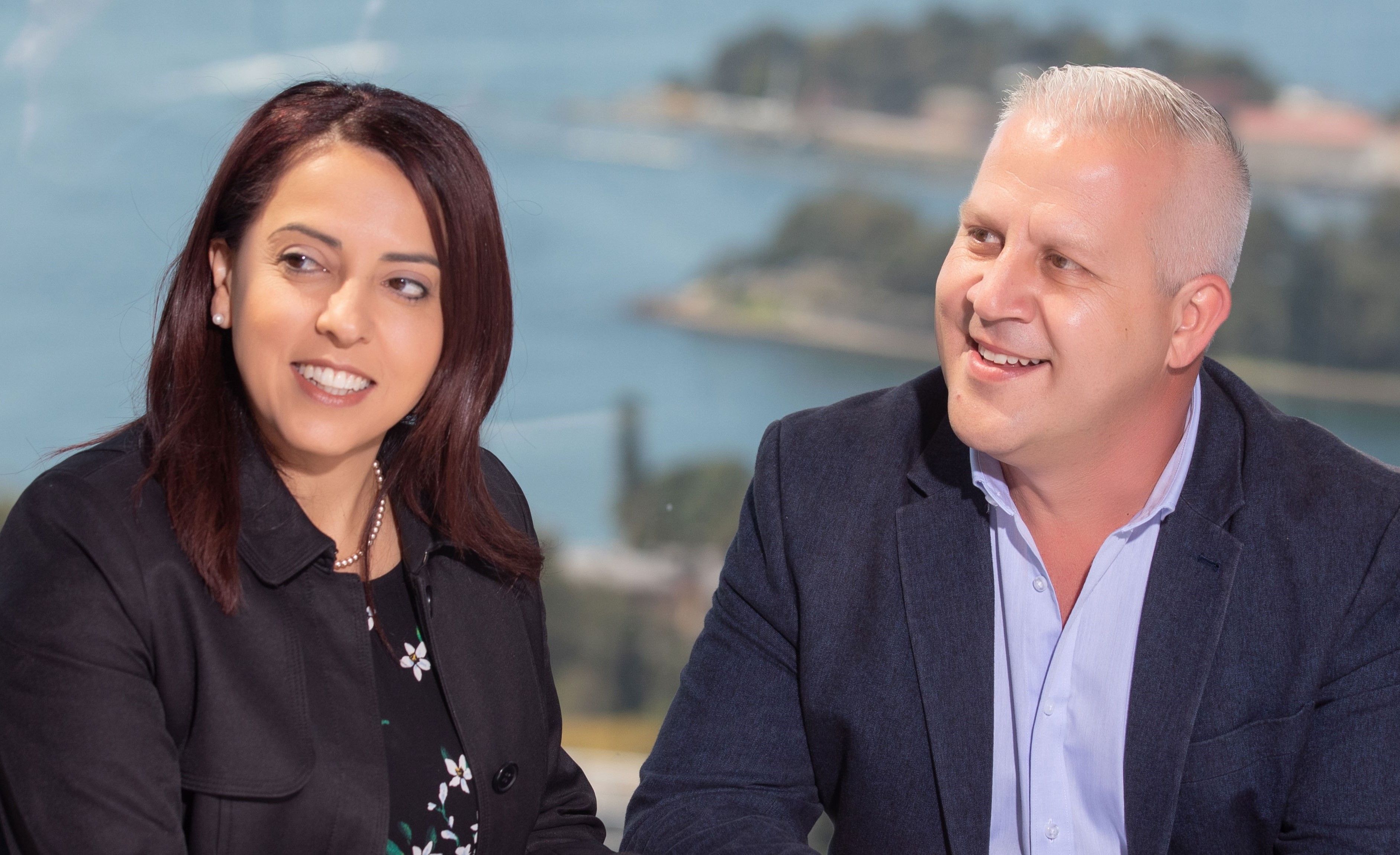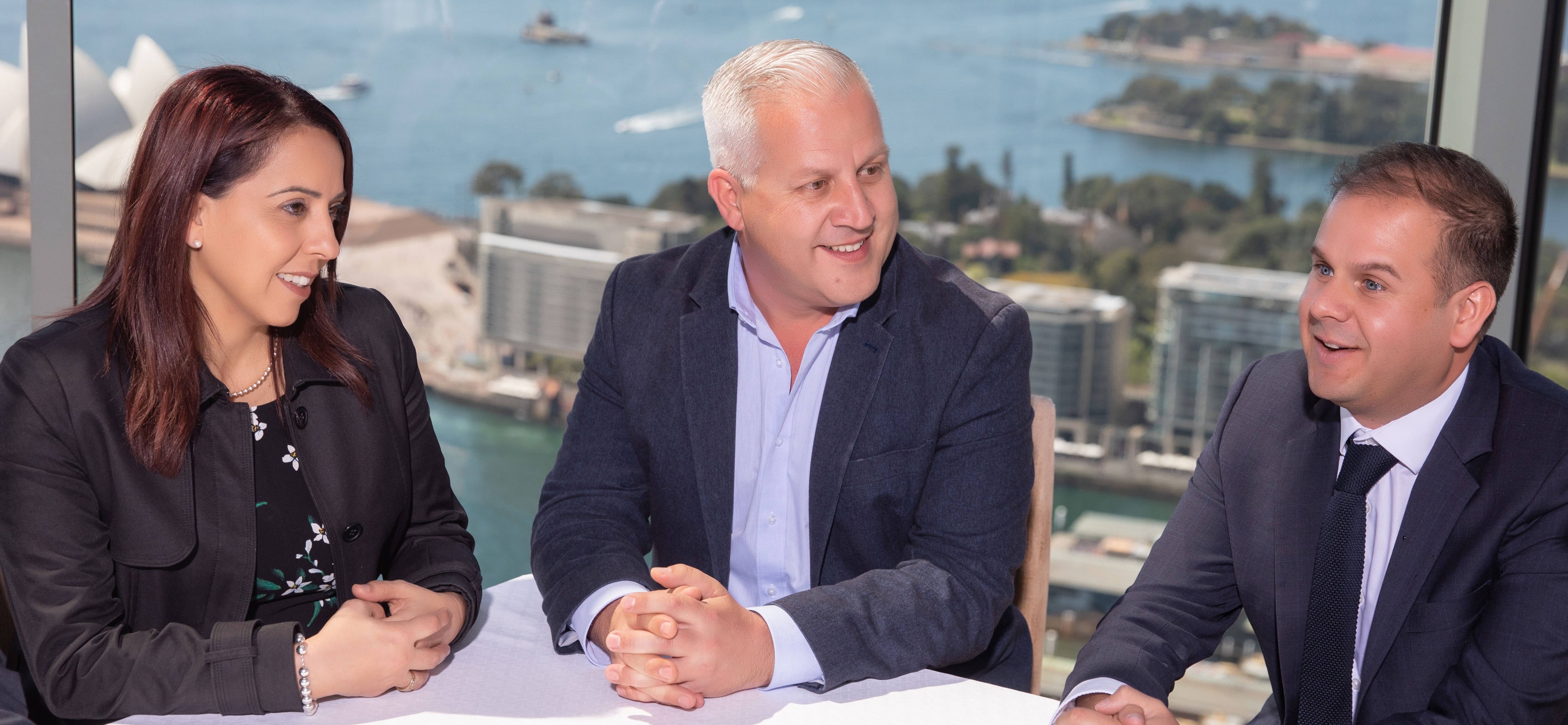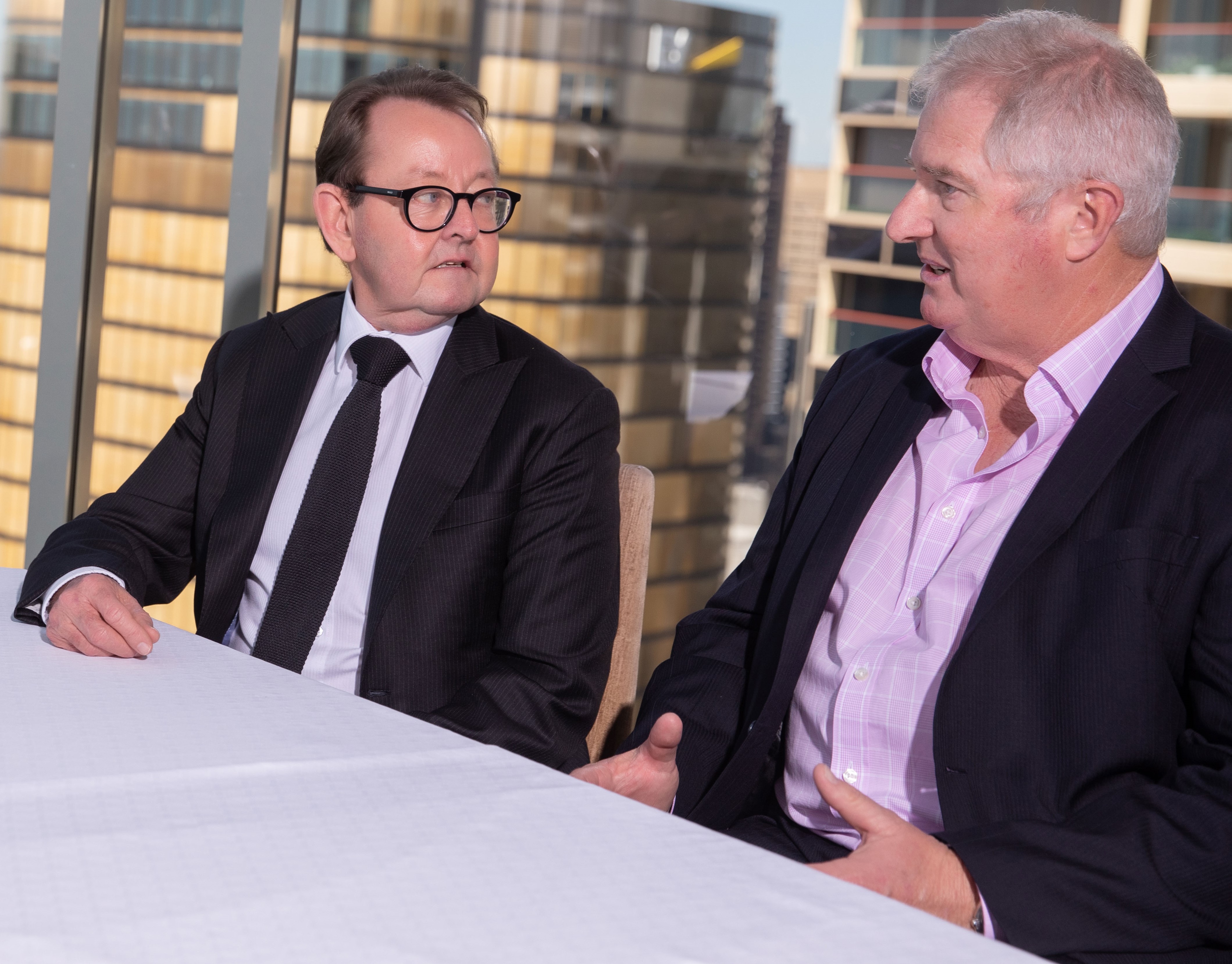

Pressured by economic conditions and lending restrictions, SMEs are increasingly turning to brokers for support. But in the face of such complexity, how can the third party channel deliver? From referral partnerships to advisory boards, Australian Broker explores the answers
Q: When it comes to SME funding, what are the typical funding requirements you see day to day?
Peter Clark: SMEs are looking for everything from start-up finance to equipment purchase, vehicles, matching their growth to the right recruitment and therefore recruiting ahead of projected revenue. Then there’s the mismatch of payment terms between clients and suppliers creating a cash flow gap.
Lielette Calleja: SMEs don’t know they need additional cash flow to grow, and that’s when they make bad decisions, like not hiring the right people. They also often think the business’s cash is their own, so then there isn’t enough money to buy stock or pay the BAS, tax, super and wages.
Ben Alford: The majority of clients who come to us are looking for equipment to expand. The infrastructure and construction work in Sydney means we get accountants ringing us every day for clients who have been unsuccessful with their bank.
Another thing we see is cash flow running out because the stuff we are financing costs a lot of money; then there’s fuel, operators to run it. We find now that we are doing more debtor facilities and, in some circumstances, business loans to fund clients over a certain period of time.
Sid Cachuela: Specifically with reference to start-ups, we see a lot who plan to raise capital to fund their next stage of growth, but if they have a year’s worth of demonstrable revenue and month-on-month growth, they can look at other sources. We see a lot of start-ups that don’t understand the difference between capital and debt, or that debt is potentially better for them, especially if they can cover the interest repayments and put their business in a better position down the track. There are options that aren’t just capital.
David O’Toole: SMEs don’t know what they don’t know, but they also don’t know where to go for advice, and they just aren’t getting it from their main banks these days. One example is an enquiry we received from a client trying to buy a vehicle for business purposes. The bank said their financials weren’t strong enough, and they suggested the client take out a personal loan – for a vehicle. We thought that was just horrendously bad and inappropriate advice, especially from a bank.
Anthony Landahl: Most of the work we do is with accountants and advisers to understand the SME’s actual needs, and that’s where we often find they have existing finance in place that doesn’t meet requirements. Or they are not aware of what some of the alternative solutions are, or they have a solution that doesn’t make sense from a business perspective.
Alex Brgudac: When we talk about the funding requirements we see at Prospa, it’s not just about what SMEs are looking to finance. We will lend for any worthwhile business purpose – assets, equipment, premises, staff. It’s more about how quickly they need the funding. SMEs have a requirement for speed and service, and traditionally they are time-poor, so they are super reactive. Timing is everything, and Prospa’s technology has enabled us to deliver on the timing piece exponentially.

Q: What are some common traps SME owners fall into when sourcing finance?
Peter Clark: Believing the wrong advice. The thing I hear most is, “That’s what Dad did, so I’m going to do things that way, too”. It gets to the point where we as brokers sometimes let SME owners fall into traps because we jump into a solution. It really is so critical to uncover what their goals and needs are.
Anthony Landahl: Many SME owners are time-poor and need a solution straight away, so a lot of a broker’s work is reactive, rather than uncovering what the actual requirement is now and into the future and finding the right solution for that.
Often the interest rate is not as relevant as the speed at which the funding is needed. Think, what’s the actual ROI if you can get funding 90 days earlier than through another means? Doing that deeper analysis around the solution to understand that if finance now means you can get more stock in or pay suppliers earlier, you can actually grow the business, then the rate becomes irrelevant.
What remains relevant is getting the right solution for a growth strategy or having your asset finance terms matching the depreciation of the asset.
Lielette Calleja: This is another issue – the financials don’t reflect the exposure. I also see a lot of incorrect balance sheets and SMEs who don’t know when they have outgrown their accountant. SMEs need to change their advisers as the business evolves. Just because you started with the accountant your parents employed for their business, it doesn’t mean that accountant is the best choice for this enterprise today. Finally, people need to work with accountants and bookkeepers who specialise in their industry.
Q: In terms of those legacy SMEs who follow their parents into self-employment and adopt their financial strategy, how should a broker tackle this?
Peter Clark: Every corporate has a board of directors, and every small business, no matter how small, should have an advisory board. The logical members would be a finance broker, an accountant and a lawyer. That advisory board then needs to operate collaboratively to support the SME. If you don’t have a board, you are setting yourself up to fly blind.
Sid Cachuela: It’s about being able to communicate contrasting objectives. That old adage of ‘you get what you pay for’ is quite relevant, because if the broker is trying to get a really sharp rate, they may not have the flexibility or terms to achieve their goals, so it’s really trying to allow those competing objectives to sit side by side.
Lielette Calleja: We need to see the savvy brokers come out. Mentoring, coaching and giving brokers the confidence to have in-depth conversations with SMEs is critical. Brokers aren’t there to pen-push loans – they need to give strategic business advice if they have the experience.

Q: In the face of these trends, how have your own best practice standards evolved, and how are the brokers around the table keeping ahead of changes?
David O’Toole: In structuring our business, we thought about how banks traditionally worked and then built our team around client needs to provide advice on different lending products. Then we created a team of subject-matter experts in each field. There’s one point of contact for clients, but when there is a need, we have the team come together.
In terms of client data, a lot of aggregation systems don’t manage commercial data for clients very well, so we use an external cloud-based CRM system for collaborative working.
Anthony Landahl: I think for brokers in general, there are probably three main points. Firstly, you’re not just there as a finance broker; you’re educating the SME, accountant and other advisers on solutions and how brokers can assist them.
Build a deeper relationship with referral partners rather than a tick and flick, where what the accountant thinks may not align with what the business owner or broker is thinking.
I think it’s also incumbent on the brokers to educate themselves on new trends, products and solutions that are coming on the market. They need to be understood so you can apply them, as do balance sheets and profit and loss statements.
It’s also important for brokers to build a team of experts around them. There may be areas in the SME space where another expert is required to help manage a solution.
Peter Clark: Education isn’t just about product training; it’s about small business support training. It’s critical the two go hand in hand.
When a new lender is offering a new solution, that doesn’t mean going to a training course and learning the ins and outs of that product because it still won’t make any sense. You have to understand the needs and challenges businesses are facing and workshop the deals.
We work with some long-term business brokers, and their clients love them, but if they are not keeping pace with changes, then their clients who trust them also won’t be.
Alex Brgudac: I feel like that’s a hallelujah moment for me because this is something I talk about all the time. We need to talk to the opportunities and how we get that education piece right. It goes back to communication.
Peter Clark: Brokers are the intermediaries between the client’s objectives and the products that are available. You have to be the one who brings that together.
In terms of knowledge, rate is the only knowledge a client brings to the table, and in business lending, it’s so often compared to a home loan rate. You have to go beyond that and straight to the issue, what we need to resolve, the presentation of solutions and various outcomes.
Sid Cachuela: We are in a tech-enabled world right now, so the speed at which [market] cycles appear is much quicker. I think having cohesive software and combining that with people who are experts in what they do is very important to ensure costs remain low and productivity remains high. So firstly it’s a case of tech, but secondly it’s about strategic partners. A person only has so much time in a day, and you can’t sufficiently cover different disciplines effectively.
Q: When structuring debt, what are your tips for less experienced brokers?
David O’Toole: One tip is to keep your eyes open to opportunities. Second, some brokers think of diversification as watering down their proposition, but if you think of the trusted relationship, doing commercial for a mortgage client simply builds on that.
Third, work with lenders who make it easy and make sure you are as educated as possible. You might not have the time to write every deal, but if you have a partner who can help, refer.
Ben Alford: Think outside the box. We have done quite a few transactions where we have taken all the unencumbered assets that aren’t going to depreciate anymore and are still in working condition and raised money against them to basically inject cash flow back into the business.
Accountants often don’t know that there are lenders who will do this sort of transaction, and the funds can be used to acquire more business, bring on more staff or pay down ATO debt. Now accountants who have seen this have realised they are missing something for their other clients.
Lielette Calleja: In terms of accounting software, keeping that up to date at all times is important because lenders can tap into the software directly. There are some lender apps that even sit on top of the accountancy software to be able to do a cash flow projection and lend straight off. If you want to make lending easier, that’s the way.
Anthony Landahl: As the broker, you need to make sure you are matching a solution to the specific needs of the SME. For example, a retail SME will have different challenges to a healthcare SME. Then use that to understand what the future cash flow needs will be. Retail needs cash flow for stock; health professionals need new equipment as healthcare evolves.
Peter Clark: There is an opportunity cost to factor in. The family home is often tapped for security, and you get deals where the house is used to give a 30-year term on a five-year loan. What often happens here – and I have seen it – is when they refinance that in five years and they haven’t paid off the last bit, that core debt is as if they have been taking funds out of the business.
 Another tip is that if you’re using a residential property, the reality is that a co-owning spouse can be made a vulnerable client as a result. A lot of lenders look away because it’s a spousal relationship, but you can unknowingly create a vulnerable person. That’s a serious consideration that the industry probably hasn’t put a lot of thought into.
Another tip is that if you’re using a residential property, the reality is that a co-owning spouse can be made a vulnerable client as a result. A lot of lenders look away because it’s a spousal relationship, but you can unknowingly create a vulnerable person. That’s a serious consideration that the industry probably hasn’t put a lot of thought into.
Q: Reflecting on the points raised so far, how can brokers tap the opportunities that exist in SME funding?
Sid Cachuela: Expand your ecosystem. I hate to bring in the sales terms, but in terms of the sales funnel, make sure you can amplify your brand by having those relationships. Also, I think it’s key to spend a little time to look at software and technological things that boost your efficiency throughout the day. In our business, we are paperless, and we send contracts electronically through various platforms. Less time is needed for compliance, so we can spend more on advice.
I think for brokers, definitely invest in seeing what is out there and never lose sight of the relationship side.
Anthony Landahl: Probably three things: first, understand your client base. If they come to you with a mortgage need and own a business, ask questions and listen to their answers to understand their needs at a deeper level. Next, educate referral partners on the value you as a broker provide. Finally, make sure you educate yourself on the SME’s needs and position yourself to solve them.
David O’Toole: If you’re a mortgage broker and you are serious about having more products as part of your service offering, have a clear strategy around how you go about doing that.
Alex Brgudac: And link the two together. If there is a strong referral partnership that is truly two-way, and there is a combined strategy that is talking to opportunity cost or the cost of doing nothing, with the SME owner at the centre of everything, that has to be a recipe for success.

Peter Clark: It’s extremely powerful when a client sees their broker and accountant sit together to uncover what is best for them.
Ben Alford: We don’t pay for advertising; everything is word-of-mouth referrals and trust. We know where our leads have come from, so we are always getting very good results. We have seen SMEs start with a $25,000 ute and then build that into multimillion-dollar turnover with strong profit. If people are happy with your work, ask for a referral.
 Q: There have been a few dramatic shifts in the lending landscape of late, driven by everything from digital disruption to new and different products, lending criteria, and regulation. With these developments in mind, what does the future of business funding look like?
Q: There have been a few dramatic shifts in the lending landscape of late, driven by everything from digital disruption to new and different products, lending criteria, and regulation. With these developments in mind, what does the future of business funding look like?
Lielette Calleja: I think it will follow everything else in going DIY, and I think single-touch payroll (STP) is going to open the doors for transparency. Government and lenders will have all the information prefilled at their fingertips, and STP will grow to become much bigger than it is now.
Because wages are becoming more regulated, you can’t just draw from the business now without reporting it to the ATO on a regular basis.
As brokers and accountants, our role is to educate SMEs on what they can achieve. To do that, I think brokers need to be tapping financial data on a regular basis as well because that’s where we work collectively. Don’t just look at the data when it comes to lending, but have a separate eye for it so we both bring our different perspectives.
David O’Toole: The emergence of tech-led analysis of cash flow within a business means we will continue to go down that track of deep data analysis, but the efficiency drive will allow brokers to spend more time with clients. And I think that tech piece is why there has been such a swing in business going to alternative, non-bank lenders.
Peter Clark: The more complex and diverse the landscape becomes, the more critical the advisory of the intermediary – broker, account – is in the life of an SME owner. From our perspective as finance brokers, look out. There is a massive growth opportunity in this space.
Sid Cachuela: There are two things that I don’t think will ever go away: complexity and human interaction. I think what will happen in the future is data analysis may move into health checks – monitoring how clients are managing their debt, finance, accounts – and giving advice on things they can action to put them into a better position in the short and long term.
Anthony Landahl: I think the role of the SME broker will grow, but I also think business expectations may evolve where there is also the opportunity to look more deeply at future needs, based on the data held today. The opportunity is there to build a deeper relationship and start to have a discussion now about what could happen in six or 12 months.
